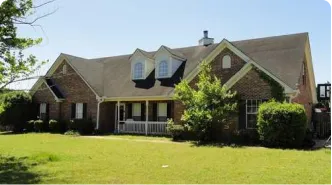South Dakota’s diverse offerings—from the Black Hills and Mount Rushmore to the growing urban hubs of Sioux Falls and Rapid City—create unique short-term rental opportunities. Whether you’re hosting a cozy cabin near the Black Hills or an urban loft downtown, enlisting a professional manager can optimize occupancy and streamline day-to-day tasks. Below, we highlight four top Airbnb management companies, share insights on local regulations, and offer best practices for success in the Mount Rushmore State.
Best Airbnb Management Companies in South Dakota
- Awning – Best Overall Airbnb Manager
- RedAwning – Best Half-Service Airbnb Management Solution
- AvantStay – Best Luxury Short-Term Rental Management Company
- Black Hills Cabin Rentals – Best for Local Presence
These companies offer a range of services, from full-service property management to marketing and booking optimization, catering to various property owner needs.
City-Specific Airbnb Management in South Dakota
//[inject:city-selector]
Selecting the Best South Dakota Airbnb Property Manager
When deciding on a management company, consider:
- Service Scope: Full-service (Awning, AvantStay) suits owners seeking minimal involvement, while half-service (RedAwning) is best for hosts wanting direct control over certain tasks.
- Location & Property Type: Luxury travelers might favor AvantStay’s upscale branding, whereas local outfits like Black Hills Cabin Rentals excel in cabin or rural listings. Urban lofts in Sioux Falls or family-friendly homes near Rapid City may require different amenities or marketing strategies.
- Reputation: Read reviews and testimonials from existing clients to gauge satisfaction. Look for transparent communication, consistent revenue growth, and prompt conflict resolution. Check references on platforms like Google, the Better Business Bureau, or social media.
- Pricing & ROI: Management fees often range between 10%–30% of monthly revenue. Weigh these costs against your property’s occupancy potential and local competition.
For property owners looking for passive income, working with an experienced management team can significantly enhance profitability.
South Dakota Airbnb Regulations & Legal Considerations
While statewide policies are relatively light, city/county rules vary:
- Short-Term Rental Permits & Zoning: Some municipalities or neighborhoods (like Rapid City) might require rental permits, set occupancy limits, or regulate parking. HOAs in certain residential developments could restrict short-term rentals.
- Taxes: South Dakota’s base sales tax is 4.5%, plus local sales/use taxes can push it above 6%. Additionally, cities or counties may impose lodging or tourism taxes. Airbnb/Vrbo often collect these automatically, but verify compliance.
- Insurance & Safety: Hosts should maintain short-term rental insurance. Winterizing properties can be crucial in colder months to avoid pipe damage or slip hazards. Fire/smoke detectors and carbon monoxide alarms may be mandated by local codes.
- Penalties for Non-Compliance: Violating local STR ordinances or failing to register with city officials can lead to fines or forced listing shutdowns. Keep tabs on local government websites or council meetings.
Failing to comply with these regulations can result in fines or even a suspension of rental operations. It’s essential to stay informed about legal requirements in your specific location.
Maximizing Your Airbnb Investment in South Dakota
1. Adjust Pricing for Seasonal & Event Demands
- Black Hills: High occupancy in summer (Mount Rushmore visits, Sturgis Rally), plus winter tourism for outdoor sports.
- Sioux Falls: Conferences, sporting events, and college visits can spike weekend rates.
- Holiday Season: Family gatherings often drive short-term rentals around Thanksgiving and Christmas.
2. Offer Amenities that Suit Your Market
- Cabin Retreats: Fire pits, hot tubs, fireplaces, board games, and pet-friendly policies.
- City Rentals: Modern décor, secure parking, fast Wi-Fi, and keyless entry.
- Family-Friendly: Extra bedding, streaming services, or a dedicated kids’ area.
3. Multi-Channel Marketing
- Major OTAs: Airbnb, Vrbo, Booking.com, plus direct listings on local tourism sites.
- Local Partnerships: Collaborate with event organizers, wedding venues, or outdoor tour operators to attract specialized crowds.
4. Deliver Exceptional Guest Experiences
- Responsive Hosting: Quick answers about check-in details or local attractions can spark positive reviews.
- Professional Cleaning: Key to impressing guests, especially during back-to-back turnovers in peak seasons.
- Personal Touches: Include a welcome basket with local treats (e.g., chislic or local craft beers) or a guide to nearby attractions.
5. Stay Updated on Regulations & Market Shifts
- Local Ordinances: Towns near major attractions might revise STR caps or lodging tax rates.
- Industry Trends: Shifts in oil or tourism economies can influence demand in certain areas.
Final Thoughts
From historic towns and nature-filled regions in the Black Hills to city accommodations in Sioux Falls, South Dakota’s short-term rental market caters to a range of travelers. Ensuring compliance with local rules, providing excellent amenities, and selecting the right property manager will help set your rental apart.
Whether you opt for Awning (comprehensive coverage), RedAwning (half-service model), AvantStay (luxury focus), or Black Hills Cabin Rentals (local cabin expertise), matching their strengths to your property type and market needs is crucial. With smart pricing, consistent hospitality, and proactive maintenance, your Airbnb investment can thrive in the Mount Rushmore State.










%201.webp)
%203.webp)



%201.webp)
.webp)

